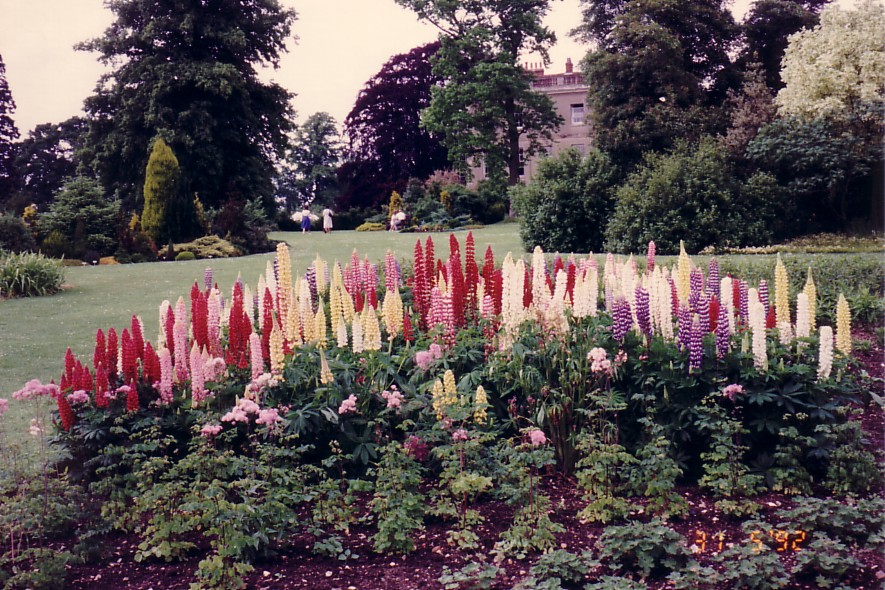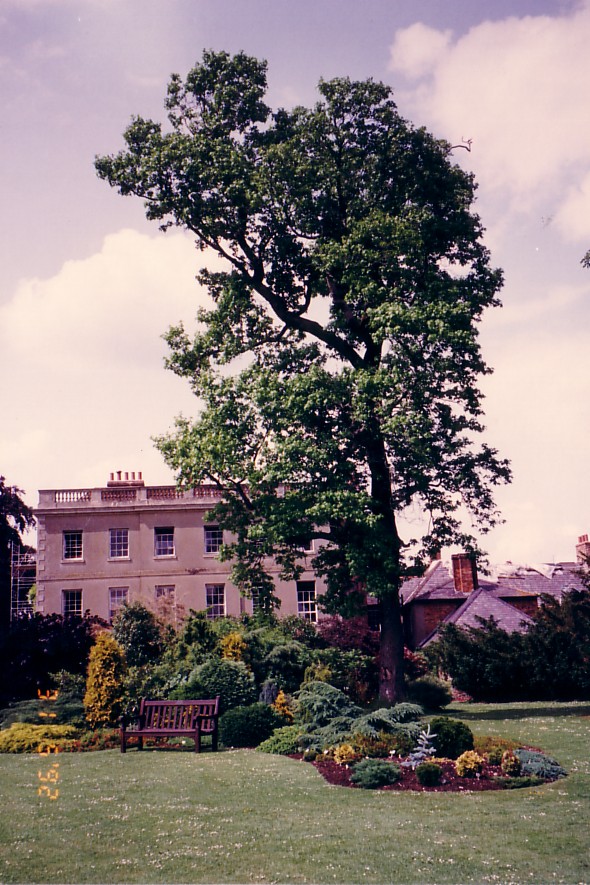|
WATERPERRY HORTICULTURAL SCHOOL
A brief history of the WHS by Ms Mary Spiller NDH, ex-tutor of the school, lecturer, author of two books, a show judge and a well-known figure in the horticultural world especially in Oxfordshire.
The story of Waterperry Horticultural School is one of great achievement. In 1927 Beatrix Havergal, the young head gardener at Downe House, a girls boarding school and Avice Sanders, the school's housekeeper decided that their great ambition was to start a school of horticulture for girls. Their aim was to provide a training both, practical and theoretical and their standards were very high. With a very small capital - about Sterling 250 they moved to a small cottage in a village called Pusey, selling their produce from an open market stall and slowly enrolling students. In 1932 they moved to Waterperry House near Oxford which they rented from Magdalen College one of the Oxford University colleges. It is a large square eighteen century set in a small park with a walled kitchen garden and at that time a small flower garden - a tremendous step from a small cottage.
Slowly the school thrived and the gardens were developed, pasture field were cultivated to add to the vegetable crops in the walled garden and fruit trees were planted. All the crops had to be sold to help to pay the costs, most of the produce was sold at a small shop which they rented in the oxford covered market eight miles away. Pot plants, bedding plants, grapes and melons sere grown in the small glasshouses and alpines in a little nursery near the house.
Because it was such a practical training the staff was large, almost as many teachers as students but the girls were expected to do everything - dig and hoe, water and prune, stoke the boiler and serve in the shop. Staff and students all lived in the house creating a family atmosphere. Miss Havergal herself was often the life and soul of the party telling stories and encouraging laughter. It was her great enthusiasm and zest for life and work which created loyalty in her staff so vital to developing the high standard for which Waterperry became known. Her partner Miss Sanders was much more retiring, she ran the house with great efficiency and strictness, could be quite fierce but had a heart of gold.
In 1948 the partners were able to buy the estate, helped by a generous gift and were able to build new glasshouses and install an oil fired boiler to heat them - much to the students relief - no more stoking! Another gift in 1963 meant that a new teaching block could be built so that day classes could be started for local amateurs and day-release students, which still continue.
One of the annual excitments was the strawberry exhibit at Chelsea Flower Show. The plants had to be grown in pots under glass to be sure the fruit was ripe in time for the show. Then they were lovingly transported to London and arranged in great pyrmids, each berry propped on a stick so that it stood out among the green leaves. The exhibit won a gold medal fifteen times.
By this time the two-year redidential course had become well known and the Waterperry Diploma accepted as a recognised qualification. the gardens were developed into teaching units - fruit, vegetables, glasshouse crops, herbaceous nursery so that the students could learn by working in each department and an attractive ornamental garden evolved. Miss H. as she was called designed a herbaceous border against the long brick wall of the kitchen garden and planted shrubs and rose borders and a small rock garden. She loved the orderliness of trained fruit on the walls and the straight rows of vegetables.
Sadly in 1970 Avice Sanders died and in 1971 in failing health Miss Havergal sold the estate to the School of Economic Science, a group of people interested in philosophy, art and music and who particularly admired the high standards maintained at Waterperry. Miss Havergal died in 1980.
The new owners did not wish to continue the residential school but the day courses still flourish. A plant centre has been opened and all the dapartments continue to raise crops and sell their produce there except that few vegetables are grown now. The Flower Garden continues to develop with a Formal Garden containing a Tudor knot and clipped box bushes, conifer and heather beds and a new rose garden all added to the existing garden which we try to maintain much as it was originally designed.
We miss the neat rows of vegetables in the walled garden, that is now part of the garden centre but perhaps one day we shall be able to plant a model vegetable garden somewhere. To help us maintain the garden and particularly the teaching aspect we are just starting a 'Friends of Waterperry Gardens' society. We hope the members will in many ways as well as enjoy the gardens.

Waterperry Gardens

Shrub Border in Waterperry Gardens
|

